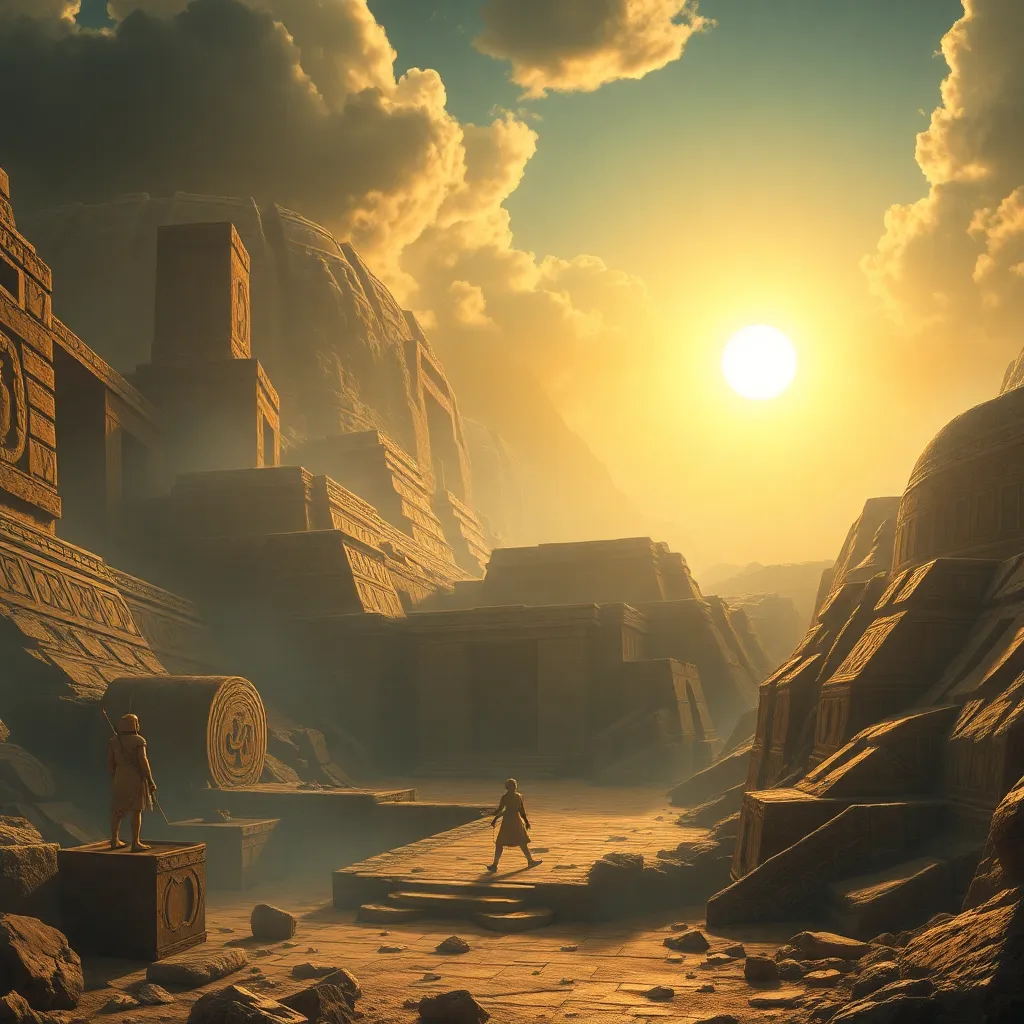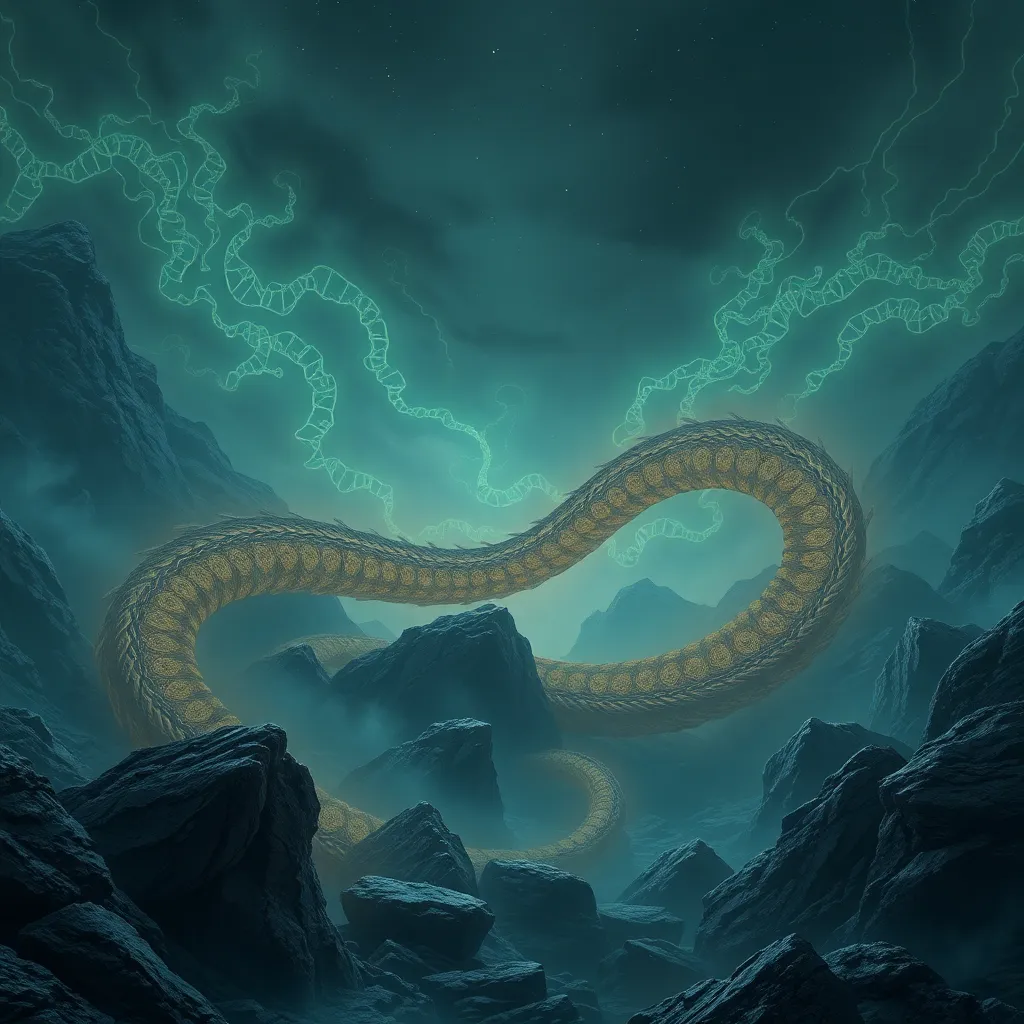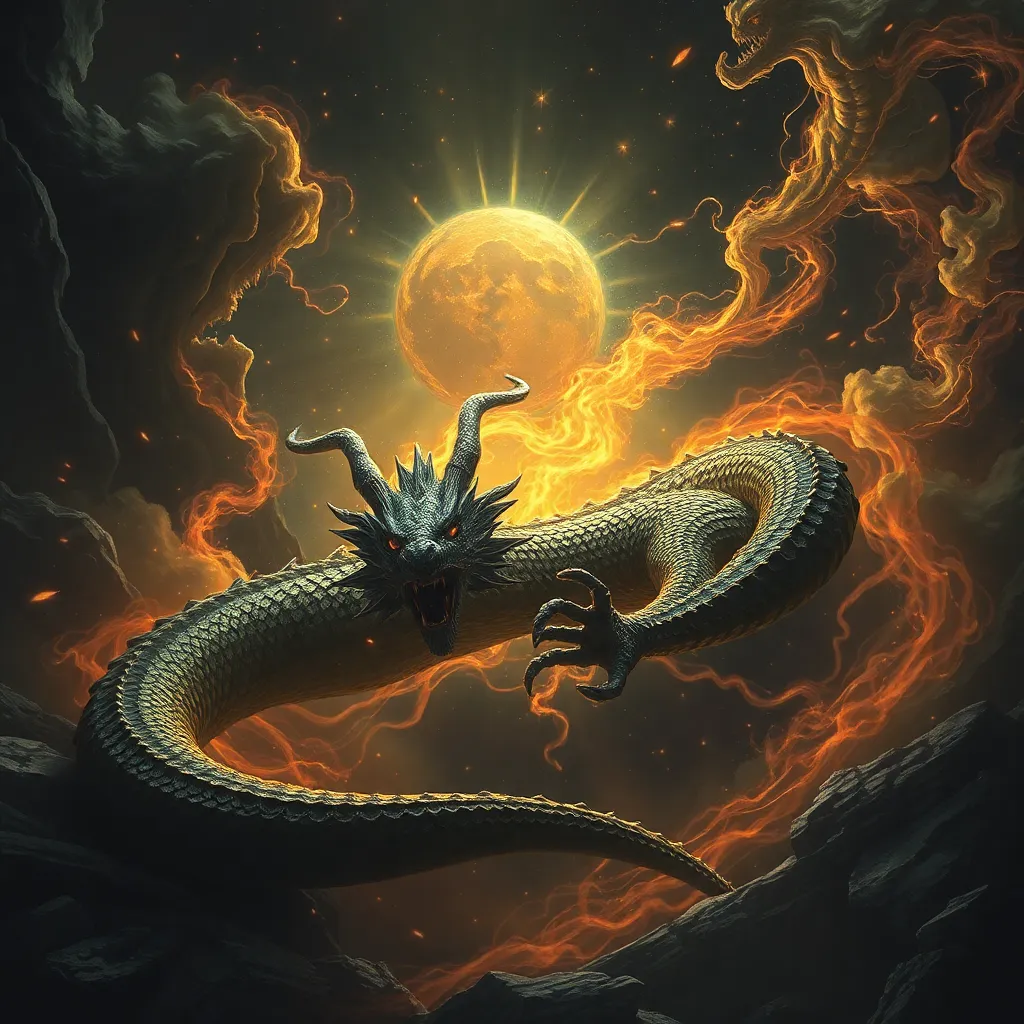Níðhöggr and the Egyptian Underworld: A Journey Through the Duat
I. Introduction
The world of mythology is rich with fascinating figures and concepts that explore the themes of life, death, and the afterlife. Among these figures is Níðhöggr, a dragon from Norse mythology that plays a critical role in the cosmic order. Similarly, the Egyptian Underworld, known as the Duat, serves as a complex realm where souls navigate their afterlife journey. This article aims to delve into the connections and contrasts between Níðhöggr and the Duat, providing insight into their significance within their respective mythologies.
II. Understanding Níðhöggr in Norse Mythology
Níðhöggr is depicted as a fearsome dragon residing in Niflheim, the realm of ice and mist. This creature is often associated with the gnawing of the roots of Yggdrasil, the World Tree, which connects all realms of existence in Norse cosmology.
A. Description of Níðhöggr as the dragon of Niflheim
Níðhöggr is not merely a dragon; it symbolizes the destructive forces of nature and the inevitability of death. Its presence in Niflheim represents the dark aspect of existence, where decay and chaos reign.
B. Role in the myth of Yggdrasil and the cycle of life and death
The myth surrounding Yggdrasil illustrates Níðhöggr’s role in the cycle of life and death. As it gnaws at the roots of the World Tree, it signifies the constant threat of chaos that looms over the order of the cosmos. This action reflects the interconnectedness of life and death, where destruction is a precursor to renewal.
C. Symbolism of Níðhöggr in relation to chaos and destruction
Níðhöggr embodies chaos, representing the destructive forces that can disrupt the natural order. In Norse mythology, its actions are a reminder of the fragility of existence and the perpetual cycle of creation and destruction.
III. The Concept of the Underworld in Ancient Egypt
The Duat is a pivotal concept in ancient Egyptian beliefs regarding the afterlife. It is portrayed as a complex realm filled with challenges and trials that the deceased must navigate to reach the afterlife.
A. Overview of the Duat and its significance in Egyptian beliefs
The Duat is often depicted as a dark, expansive space that lies beneath the earth, where the sun travels at night. This realm is crucial for the journey of the soul, where it must confront various obstacles and deities.
B. Key features of the Duat: realms, deities, and the journey of the soul
- Realms: The Duat consists of multiple regions, each with its own challenges and guardians.
- Deities: Many gods and goddesses, such as Anubis and Ra, play significant roles in guiding and protecting souls.
- Journey of the Soul: The deceased must navigate through the Duat, facing trials that test their worthiness for the afterlife.
C. The role of Osiris and the weighing of the heart in the afterlife
Osiris, the god of the afterlife, plays a crucial role in determining the fate of souls. The weighing of the heart against the feather of Ma’at symbolizes the judgment of the deceased’s life. A balanced outcome signifies a worthy soul, while unworthiness leads to destruction.
IV. Comparative Analysis: Níðhöggr vs. the Duat
While Níðhöggr and the Duat stem from different mythological traditions, they share themes of death, rebirth, and the journey of the soul, albeit in contrasting manners.
A. Themes of death and rebirth in both mythologies
Both Níðhöggr and the Duat illustrate the cycle of death and rebirth. Níðhöggr’s gnawing at Yggdrasil signifies decay, while the Duat represents a journey that can lead to rebirth in the afterlife.
B. The role of guardianship: Níðhöggr as a devourer vs. Duat’s protective deities
While Níðhöggr acts as a devourer, embodying chaos, the Duat is populated by protective deities that assist souls in their journey. This contrast highlights different cultural perceptions of death and the afterlife.
C. The journey through the afterlife: Níðhöggr’s place vs. the trials of the Duat
Níðhöggr represents a constant threat to the order of existence, while the Duat presents a structured journey with trials that serve as a rite of passage for the deceased.
V. Literary and Artistic Representations
The representations of Níðhöggr and the Duat in literature and art reflect the values and beliefs of their respective cultures.
A. Depictions of Níðhöggr in Norse texts and modern adaptations
Níðhöggr appears in various Norse texts, including the Poetic Edda and the Prose Edda. In modern adaptations, it has become a symbol of chaos and destruction, often represented in films and fantasy literature.
B. Artistic interpretations of the Duat in ancient Egyptian art and literature
The Duat is richly depicted in ancient Egyptian art, with intricate hieroglyphs and illustrations showing the journey of the soul. These artworks reveal the significance of the afterlife in Egyptian culture.
C. The influence of these mythologies on contemporary culture
Both Níðhöggr and the Duat have influenced modern storytelling, inspiring works in literature, film, and art. They serve as symbols of the eternal struggles between chaos and order, life and death.
VI. Thematic Connections: Chaos, Order, and the Cycle of Existence
The interplay of chaos and order is a central theme in both Níðhöggr’s narrative and the journey through the Duat.
A. Analysis of chaos represented by Níðhöggr and order in the Duat
Níðhöggr embodies the chaotic forces that threaten to disrupt life, while the Duat represents a structured journey towards order and rebirth.
B. The importance of balance between destruction and creation
Both mythologies highlight the necessity of balance. Destruction is an integral part of creation, and understanding this balance is key to appreciating the cycle of existence.
C. How these themes reflect on human experiences of mortality
The themes of chaos, order, and the afterlife resonate with human experiences of mortality, reminding us of the fragility of life and the inevitability of death.
VII. Conclusion
Níðhöggr and the Duat serve as profound representations of cultural beliefs surrounding death and the afterlife in Norse and Egyptian mythologies. By exploring these figures and concepts, we gain a deeper understanding of how different cultures interpret the mysteries of existence. Ultimately, the universal themes of life, death, and the afterlife underscore our shared humanity and the quest for meaning beyond this world.
VIII. Further Reading and Resources
For those interested in exploring these mythologies further, consider the following texts:
- The Poetic Edda – A primary source for Norse mythology.
- The Prose Edda – A comprehensive guide to Norse myths and legends.
- The Egyptian Book of the Dead – An essential text for understanding the beliefs surrounding the Duat.
- Mythology: Timeless Tales of Gods and Heroes by Edith Hamilton – A comparative study of various mythologies.



